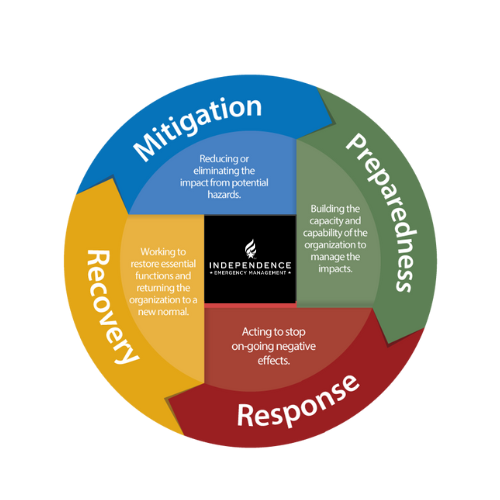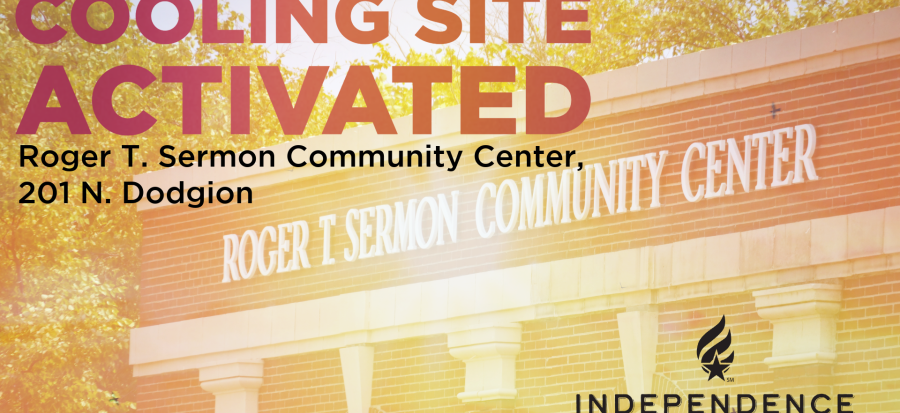About Emergency Management

|
Emergency Management is the system used to coordinate the efforts of city agencies and partners to plan for, respond to, and recover from disasters. We meet regularly with residents and regional stakeholders to work together on ways to prepare, mitigate, respond, and recover from all hazards.
Preparedness
Preparedness involves planning, training, evaluating, and improving procedures before a disaster occurs. This could include things like writing an evacuation plan, community outreach education events, updating the mass notification systems, strengthening partnerships with our various stakeholders, etc. We want Independence to be ready: Know what disasters and hazards could affect our area, how to get emergency alerts, and where you would go if you and your family need to evacuate. Make sure your family has a plan and practices it often.
Mitigation
Mitigation refers to the steps taken to reduce the impact of a disaster before it occurs. This could include projects such as constructing a dam to prevent flooding, reducing residential zones in hazard-prone areas, and constructing new buildings to withstand high winds and earthquakes.
Response
Response begins when the disaster is imminent or has already occurred. This may include monitoring conditions, activating the emergency operations center, acting as liaison with local, state, and federal agencies, and providing support to emergency response organizations that are directly involved with the care of the residents.
Recovery
Recovery is the process of returning the community to its pre-disaster state. This phase takes place when the immediate threat to life and property has ended. This is a restoring process that includes things like repairing damaged homes, making repairs to city utilities, tracking costs, applying for federal assistance, and generally re-establishing a sense of normalcy.

